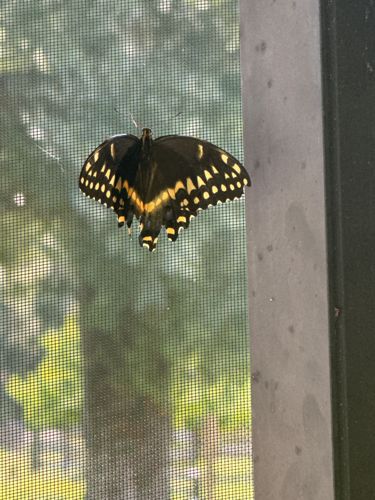Eastern Black Swallowtail
Scientific Name: Papilio polyxenes
Order & Family: Order: Lepidoptera, Family: Papilionidae
Size: Wingspan typically ranges from 7.5 to 11 cm (3 to 4.3 inches)

Natural Habitat
Commonly found in open areas like fields, meadows, gardens, parks, and disturbed areas. They thrive in environments where their host plants and nectar sources are abundant.
Diet & Feeding
Adults feed on nectar from a wide variety of flowers, including milkweed, clover, thistles, and phlox. Caterpillars feed on the foliage of host plants, primarily plants in the carrot family (Apiaceae) such as parsley, dill, fennel, carrots, and celery.
Behavior Patterns
Adults are active during the day, flying and nectaring on various flowers. Females lay eggs individually on host plants. The caterpillars undergo several instars, with early instars mimicking bird droppings and later instars being green with eye spots. They pupate in a chrysalis, often camouflaged as a leaf or twig.
Risks & Benefits
Benefits: Important pollinators for various plants, contributing to plant reproduction. Their caterpillars are also a food source for birds and other insectivores. Risks: Caterpillars can occasionally be a minor pest in vegetable gardens if present in very large numbers, as they feed on cultivated plants like parsley and dill.
Identified on: 8/24/2025